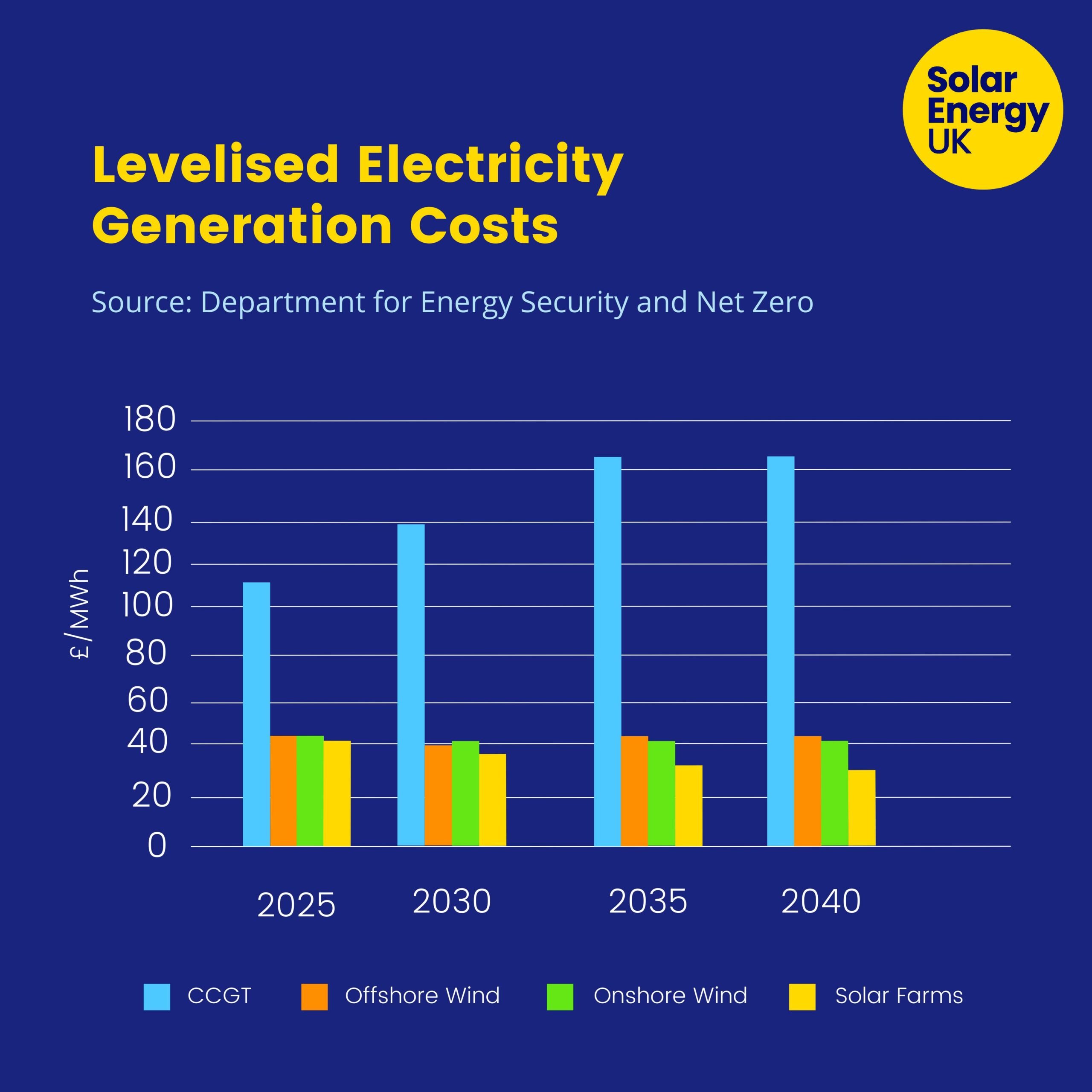Solar Energy UK
9 August 2023
The Government’s confirmation that solar farms are the most cost-effective way to power the nation is a wake-up call for opponents of net zero, says Solar Energy UK.
The Department for Energy Security and Net Zero published revised estimates of levelised costs on Friday, outlining the average cost per megawatt-hour generated over the lifetimes of various forms of energy generation, including offshore wind and combined-cycle gas turbines (CCGTs).[1] It is the first update in three years.
The changes reflect an earlier report by consultancy WSP, which increased the assumed size of the exemplar solar farm from 16.4MW to 20MW, while cutting capital costs from £730 to £615 per kilowatt.[2] This reflects the increasing size of plants in the pipeline, the falling price of modules and their increasing capacity, said WSP.
However, the sector has also faced short-term inflationary pressures post-Covid and the report cautions that the prices are expressed in 2021 prices.
While substantial by older standards, 20MW is still relatively small compared to many solar farms that are now in the pipeline. The largest to be approved so far is EDF’s Longfield project in Essex, with a planned capacity of 400MW.[3]
For projects commissioning in 2025, the department reckons that costs for CCGTs come in at £114/MWh, dominated by fuel and carbon emissioFns. In contrast the levelised costs of solar are put at only £41/MWh in 2025, down £6 in three years. This slightly less than offshore and onshore wind (which remains under an effective ban in England).
Costs are expected to be even lower in the future, falling to a central estimate of £30/MWh in 2040 – or perhaps £26/MWh according to the lowest estimate. By this time, the cost of gas generation would have risen to an eye-watering £165/MWh.

“This is yet another ringing endorsement of solar energy in the UK and further justification for the Government’s target to reach 70GW of capacity by 2035. In Britain, power generated by the sun is now a third of the cost of power made from burning gas and it will only get cheaper. The fastest way to permanently drive down energy bills is to build more renewables,” said Chis Hewett, Chief Executive of Solar Energy UK.
The true levelised costs of solar energy are likely to be even lower, as the reports disregard the benefits of sharing grid connections with battery energy storage systems, an increasingly common aspect of solar farms. The Longfield project will include a facility able to supply a further 100MW to the grid, for example, while even larger ones are planned.
[1] Electricity generation costs 2023
[2] Onshore wind and solar PV costs review
– ENDS –
Editor’s notes:
For more information or to request an interview, please contact:
Gareth Simkins, Senior Communications Adviser
